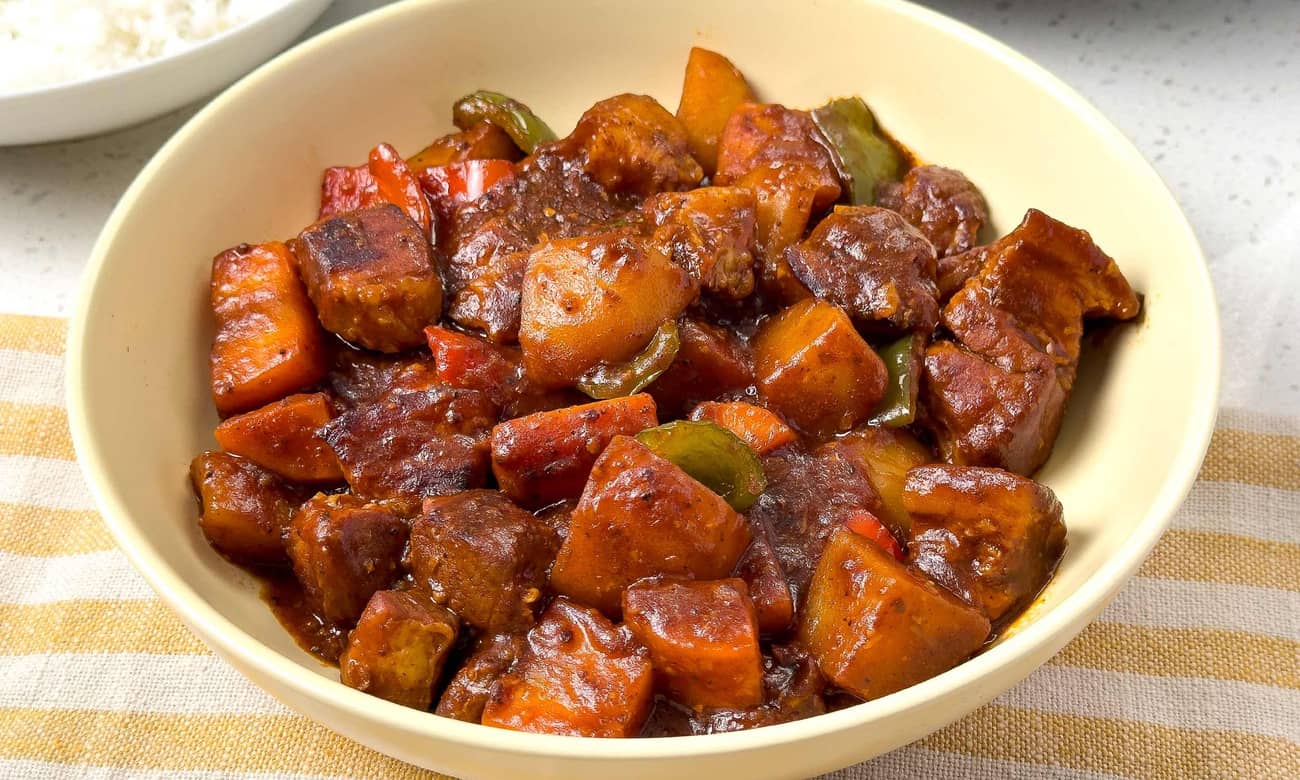
You don't have to soak mung beans overnight. This creamy monggo with dahon ng sili cooks straight away, with crispy pork belly to make it richer and heartier.
Forgot to soak your monggo? Don’t worry: you don’t need to.
Some home cooks still soak monggo or mung beans overnight to speed up cooking, but these beans are small enough that a gentle simmer softens them just fine.
For this pork belly monggo, start by cooking the pork until it turns golden and crispy. The rendered pork fat plus makes the whole pot meatier and richer. Add your cooked monggo and simmer until they’re soft but still holding their shape. From here, it’s your call: keep it creamy and thick, or add water or broth to loosen it into something light and soupy.
Dahon ng sili adds a clean, subtle freshness that lifts this rich monggo just right. Stir them in at the end to keep them vibrant.
Cook monggo: Place monggo in a medium pot. Cover with 4 cups water and bring to a boil over medium high heat. Once boiling, reduce heat to medium low to maintain a simmer. Cover pot and cook, stirring occasionally, until monggo is tender, about 1 hour. If monggo looks dry at any point, add as much water as necessary to keep everything submerged. Remove from heat and set aside.
Cook pork: Add pork belly slices in a single layer to a large pan over medium heat. Let the fat slowly render out from the pork as the pan heats up. Cook pork in rendered fat until golden brown and crispy on both sides, about 20 minutes.
Set aside some of the crispy pork for garnish. Scoop out any excess fat with a spoon, leaving about 2 tbsp in the pan.
Cook aromatics: Add onion and garlic to the pan. Cook, stirring frequently, until fragrant, about 3–4 minutes.
Add beans: Add cooked monggo to the pan plus 1 cup water. Stir until fully combined and simmer, uncovered, for 10 minutes.
Add vegetables: Add dahon ng sili and cook until softened, about 2–3 minutes.
Finish and serve: Season to taste with patis and black pepper. Remove monggo from heat and transfer to a serving bowl. Top with reserved cooked pork belly. Serve hot with steamed rice.
If you're living abroad and can't find whole mung beans, green lentils are the best substitute. They have a very similar earthy flavor and hold their shape well.
You can also use yellow mung dal (split mung beans), but keep in mind they cook much faster and will result in a soupier consistency rather than a stew with distinct beans.
Soaking softens your monggo, so you can cut the boiling time to about 15–20 minutes.
You really don't have to soak monggo ahead of time. Mung beans are small enough that they cook relatively quickly compared to other dried beans. Boil them directly for 45–60 minutes, leaning towards an earlier cook time if you like a firmer bite.
You can swap it out for malunggay (moringa), spinach, talbos ng kamote (kamote tops), or dahon ng ampalaya (ampalaya leaves). Dahon ng sili (chili leaves) have a mild peppery note, so expect a slight change in flavor with different greens!
Whatever greens you choose, add them at the last few minutes of cooking.
The secret to a creamy monggo isn't cream—it's the beans themselves!
Once the beans are soft, take a ladle and smash some of the beans against the side of the pot. This releases the starch and naturally thickens the broth.
If you want it richer and don't mind a flavor tweak, you can also add a splash of coconut milk (gata), a variation popular in some provinces.
